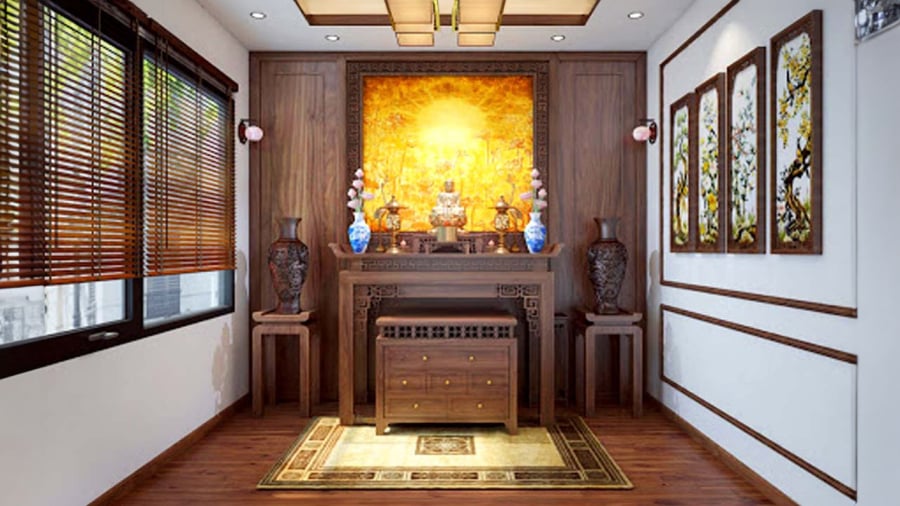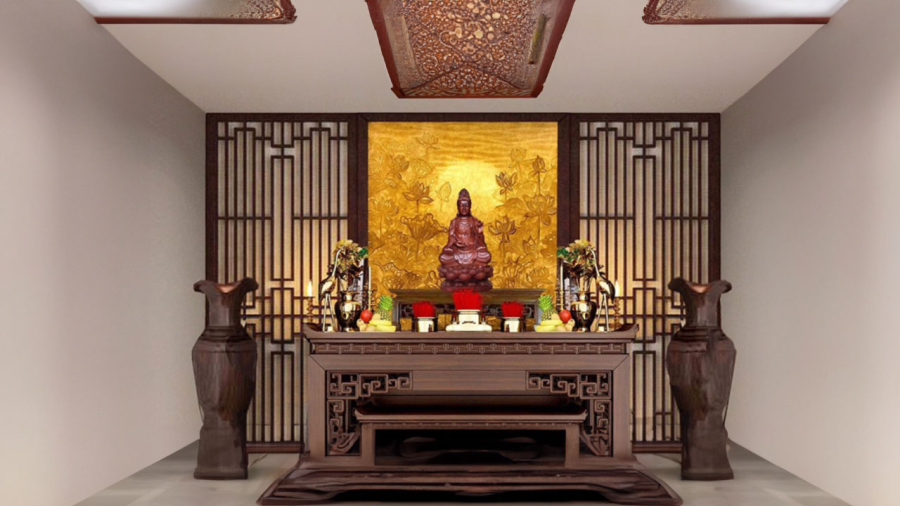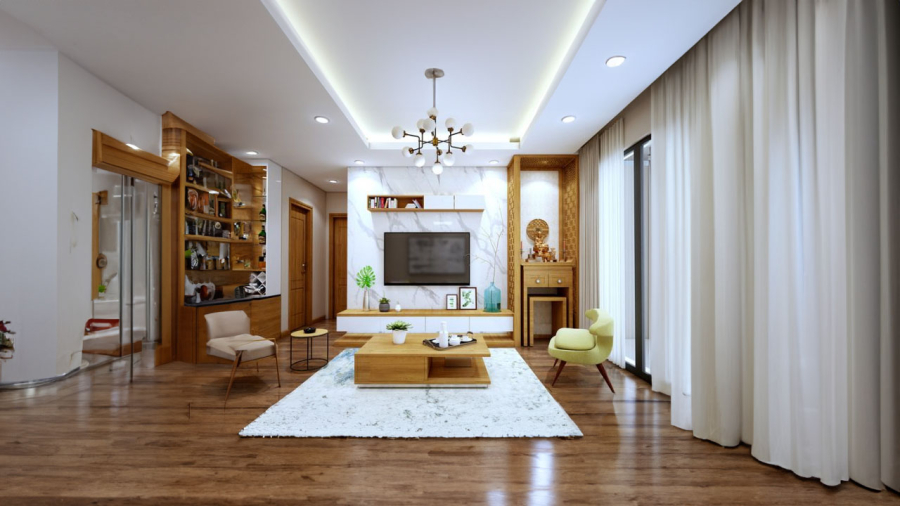In the structure of houses in Vietnam, the ancestral altar area is very important. However, due to limited space, many houses place the ancestral altar in the living room. There are also families that place the ancestral altar in a separate room. However, one thing that few people pay attention to is the lighting in the altar area.
Many people prefer natural light, so they open skylights to make the living room bright, which is good for the living room. But for the altar area, it doesn’t need as much strong light.

Aside from considering the direction, location, type of altar, and objects on the altar, the lighting in the altar area is extremely important but often overlooked by many families. Many families often think that houses need to be bright to bring positive energy, so the brighter, the better. In reality, the altar area is the yin part of the family, where ancestors rest in peace. Therefore, the lighting in the altar area should not be as bright as the lighting in the living room, kitchen, or bedroom.
The altar area should avoid strong light and wind
If the altar is placed in the living room and the living room is too bright, the altar area is easily disturbed, which disrupts the peace of the ancestors. If the separate altar room often has the main door or windows open, it allows light to shine onto the altar and wind to enter the altar, which is strongly discouraged.
The altar area is a place that shows the respect and remembrance of descendants for their ancestors, where the living invite their ancestors to reside. The altar is where ancestors rest in peace. Therefore, this place is the most yin part of the house. So if there is strong light shining, the ancestors cannot rest in peace, which affects the energy field and causes the ancestors to leave. From there, it leads to financial loss, difficulty in business, and even loss of money.

That’s why the altar should avoid being near windows, balconies, facing the main door, being exposed to wind, or being in a position with strong overhead lighting.
When the altar is exposed to strong light and wind, it cannot gather energy, causing instability and dispersion of the family’s finances. Moreover, wind and direct sunlight can bring negative energy into the altar area.
What to do when the altar is exposed to excessive light?
If it is a separate altar room, this issue is easier to resolve. You need to close the door of the room and change the lighting system, avoiding white fluorescent lights and strong chandelier lights in the altar room. If there are windows that receive direct sunlight, use curtains or partition screens to cover them. You can also use dividers or plants to disperse the airflow.
In the case of the altar being in the living room, the position of the lights in the room needs to be adjusted to avoid shining onto the altar. Adjust the altar by creating a partition in the living room, to keep the altar within the living room but with a certain differentiation to avoid disturbance. In addition to the altar, adding a pair of lục bình (vase) can stabilize energy, dispel negative energy, and help balance yin and yang.

Notes when choosing lighting for the altar
When arranging and placing the prayer room, altar, it should avoid being exposed to diagonal natural light, but also avoid gloomy darkness. If using lights, use yellow lights to create a warm atmosphere for the prayer room. Arrange the lights in the altar area to avoid shining into the eyes of those who light incense. Avoid using fluorescent lights or bright LED lights in the altar area. The lighting should not be too dim but not too bright, warm and gentle to a moderate extent.
In the prayer room or facing the altar, there should be no mirrors. The altar should not be close to the main door or in a straight path to the main entrance. When not lighting incense, it is not advisable to keep the door wide open as it will create gusts of wind and may invite negative energy into the altar area.
The information provided is for reference and contemplation purposes only.
Tips for Relief from Eyestrain and Dry Eyes Resulting from Prolonged Screen Use
Do you ever feel like your eyes are overworking? This is a common symptom of eye strain, which can include temporary blurred vision and dryness of the eyes. Read on with Dien May Xanh to get tips on how to cope with eyestrain and dryness in the eyes that comes with prolonged use of laptops, computers, and phones.



































